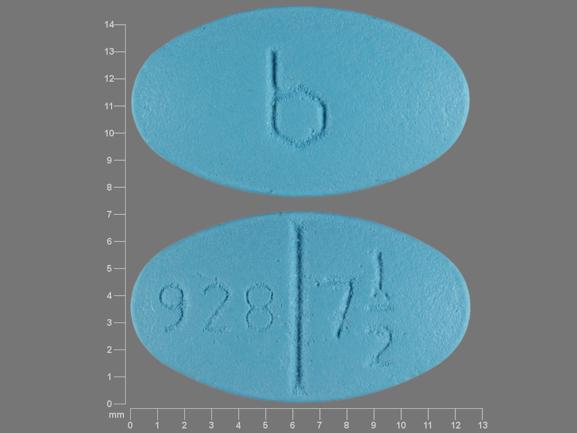Trexall Dosage
Generic name: METHOTREXATE SODIUM 5mg
Dosage form: tablet, film coated
Drug classes: Antimetabolites, Antipsoriatics, Antirheumatics, Other immunosuppressants
Medically reviewed by Drugs.com. Last updated on Apr 21, 2025.
Important Dosage and Safety Information
Verify pregnancy status in females of reproductive potential before starting TREXALL.
Instruct patients and caregivers to take the recommended dosage as directed, because medication errors have led to deaths.
When switching the dosing regimen from oral administration to intravenous, intramuscular, or subcutaneous administration, an alternative dosing regimen may be necessary.
Do not administer to patients who are unable to swallow a tablet.
TREXALL is a cytotoxic drug. Follow applicable special handling and disposal procedures.1
Recommended Dosage for Neoplastic Diseases
Acute Lymphoblastic Leukemia
The recommended starting dosage of TREXALL is 20 mg/m2 orally once weekly, as part of a combination chemotherapy maintenance regimen. After initiating TREXALL, periodically monitor absolute neutrophil count (ANC) and platelet count and adjust the dose to maintain ANC at a desirable level and for excessive myelosuppression.
Mycosis Fungoides
The recommended dosage of TREXALL is 25 mg to 75 mg orally once weekly when administered as a single agent or 10 mg/m2 orally twice weekly as part of a combination chemotherapy regimen.
Relapsed or Refractory Non-Hodgkin Lymphomas
The recommended dosage of methotrexate is 2.5 mg orally 2 to 4 times per week (maximum 10 mg per week) as part of a metronomic combination chemotherapy regimen.
Recommended Dosage for Rheumatoid Arthritis
The recommended starting dosage of TREXALL is 7.5 mg orally once weekly with escalation to achieve optimal response. Dosages of more than 20 mg once weekly result in an increased risk of serious adverse reactions, including myelosuppression. When responses are observed, the majority occurred between 3 and 6 weeks from initiation of treatment; however, responses have occurred up to 12 weeks after treatment initiation.
Administer folic acid or folinic acid to reduce the risk of TREXALL adverse reactions.
Recommended Dosage for Polyarticular Juvenile Idiopathic Arthritis
The recommended starting dosage of TREXALL is 10 mg/m2 orally once weekly with escalation to achieve optimal response. Dosages of more than 30 mg/m2 once weekly result in an increased risk of serious adverse reactions, including myelosuppression. When responses are observed, the majority occurred between 3 and 6 weeks from initiation of treatment; however, responses have occurred up to 12 weeks after treatment initiation.
Administer folic acid or folinic acid to reduce the risk of TREXALL adverse reactions.
Recommended Dosage for Psoriasis
The recommended dosage of TREXALL is 10 mg to 25 mg orally once weekly until an adequate response is achieved. Adjust the dose gradually to achieve optimal clinical response; do not exceed a dose of 30 mg per week. Once optimal clinical response has been achieved, reduce the dosage to the lowest possible dosing regimen.
Administer folic acid or folinic acid supplementation to reduce the risk of TREXALL adverse reactions.Dosage Modifications for Adverse Reactions
Discontinue TREXALL for:
- Anaphylaxis or other severe hypersensitivity reactions
- Lymphoproliferative disease
Withhold, dose reduce or discontinue TREXALL as appropriate for:
- Myelosuppression
Withhold or discontinue TREXALL as appropriate for:
- Severe gastrointestinal toxicity
- Hepatotoxicity
- Pulmonary toxicity
- Severe dermatologic reactions
- Severe renal toxicity
- Serious infections
- Neurotoxicity
Frequently asked questions
- How long does chemo take? Sessions and recovery time?
- Why should I take folic acid with methotrexate?
- How long does it take for methotrexate to work?
- Does methotrexate cause weight gain?
- How do I know if methotrexate is working for rheumatoid arthritis?
- Radiation vs. Chemo: Which cancer treatment is right for you?
- What is chemo brain and how long does it last?
- What are the different brands of methotrexate?
- How soon can you start chemo after port placement?
More about Trexall (methotrexate)
- Check interactions
- Compare alternatives
- Pricing & coupons
- Drug images
- Side effects
- During pregnancy
- Drug class: antimetabolites
- Breastfeeding
- En español
Patient resources
Other brands
Otrexup, Rasuvo, Xatmep, Rheumatrex Dose Pack, ... +2 more
Professional resources
Other brands
Otrexup, Rasuvo, Xatmep, Rheumatrex Dose Pack, ... +2 more
Related treatment guides
See also:
Further information
Always consult your healthcare provider to ensure the information displayed on this page applies to your personal circumstances.


